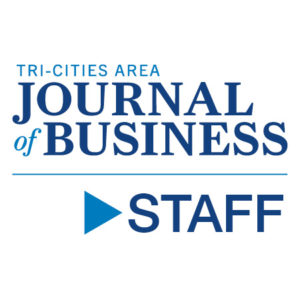
Home » Q&A with Steven Ashby
Q&A with Steven Ashby

August 15, 2019
 Andrea Starr | Pacific Northwest
Andrea Starr | Pacific NorthwestNumber of employees you oversee: About 4,500.
Brief background of your business:
Pacific Northwest National Laboratory is a U.S. Department of Energy national lab proudly operated by Battelle since its inception in 1965. PNNL’s talented scientists, engineers and support professionals draw on signature capabilities in chemistry, earth sciences and data analytics to advance scientific discovery, as well as to enhance energy resiliency and strengthen national security.
How did you land your current role? How long have you been in it?
I became laboratory director in April 2015. Previously, I served as PNNL’s deputy director for science and technology, a position Battelle recruited me to in 2008 after 21 years at Lawrence Livermore National Laboratory, or LLNL.
What’s the most common question you get about PNNL?
What we do. PNNL and the other DOE national labs don’t do a very good job of explaining what we do and why it is important. One of my primary goals as lab director is to elevate PNNL’s stature as a premier scientific research institution by delivering bold scientific outcomes and forging strategic partnerships with academia and industry. I also wish to raise the lab’s visibility on the west side and to be recognized as a regional resource for the state.
Why should Tri-Citians care about science and technology?
Scientific discovery and technological innovation underpin mankind’s greatest advancements, from Gutenberg’s printing press to Edison’s electric grid, and from Salk’s polio vaccine to Armstrong’s first steps on the moon. As Tri-Citians, we can take great pride in knowing that many of today’s important discoveries and inventions are being developed right here in our community, by our neighbors and friends. Science also plays a critical role informing decisions and policies that shape all of society; and technology fuels much of our local economy.
What is the biggest challenge or challenges facing scientists today?
The nation’s research and development enterprise needs sustained funding to support the long-term research programs required to tackle our nation’s most complex challenges. We are asking our brightest citizens to make a commitment to the nation by working at PNNL and other national labs, and they want to see that the commitment is reciprocated. At the same time, scientists and engineers must do a better job of building awareness and support for the immense value that science and technology brings to our lives today and for generations to come.
What is one characteristic that you believe every leader should possess?
I believe that a leader’s role is to serve his or her institution and employees. If one does this with integrity and humor, things tend to work out for the best—most of the time!
What advice would you give someone going into a leadership position?
Create a vision that inspires others to follow—a common goal that brings focus, motivates action and delivers impact. Empower your team, encourage them and thank them regularly. At the same time, hold them accountable—starting with yourself. In short, set an example for others to follow, especially with respect to work ethic and integrity. I also would advise a new leader to communicate more often than might seem necessary, especially during times of uncertainty. Don’t wait to have all the information; while you’re doing that, staff are creating their own narratives! Finally, don’t be afraid to step outside your comfort zone—it’s where great things happen. You will surprise yourself in some good ways—and occasionally in some not-so-good ways. You’ll learn something either way!
Role models or mentors?
I have had several terrific mentors throughout my career. My Ph.D. thesis advisor had a profound impact on who I am today and how I got here. He introduced me to some of the most famous numerical analysts in the world, sparking my interest in computational mathematics. He also introduced me to the national labs. At LLNL, I was blessed with great supervisors, including a wonderful person who taught me the importance of vision and the real meaning of passion.
How do you keep your employees motivated?
I am continuously impressed with and thankful for the hard work and dedication I find in the staff at PNNL. They are deeply committed to their sponsors. Our collective motivation comes from a shared vision to understand and improve the world around us. I do my part by reminding them of the importance of their work and the difference they are making.
How did you decide to pursue the career you are working in today?
When I was in college and graduate school, computer science was still an emerging field. I took several courses in it and in mathematics. I was intrigued by the ability to solve complex problems on supercomputers. This led me to my first job as a computational scientist at LLNL. Over time, I realized I had a knack for technical leadership and transitioned from research to management. A crucible moment for me was being asked to form a new research organization, which I am proud to say is still thriving today. I miss doing research, but I live vicariously through the accomplishments of my amazing colleagues.
How do you measure success in your workplace?
Impactful outcomes. Continuous progress. An engaged, diversified and inclusive workforce. When VIPs visit the lab, they invariably comment on the enthusiasm of the staff. This is a great measure of our success in the workplace.
Leadership style?
I am a fast-paced driver-driver with high expectations for the laboratory, my team and myself. I seek and value the input and expertise of my colleagues, and I respect and rely upon a diversity of opinions and viewpoints.
Best time management strategy?
I must know a certain amount about many things, so I hold firm to accepting only the level of detail that equips me to make informed decisions without drowning in minutiae. This is hard for me because, as a scientist, I tend to dive into problem-solving mode. With respect to meetings, I insist that we come prepared, and I don’t allow the use of electronics.
How do you balance work/family life?
Not very well! I love what I do and am genuinely passionate about PNNL and the missions of the department. Unfortunately, this means I have not always been fair to my family; and as my children have grown, the Harry Chapin song, “Cat’s in the Cradle,” haunts me.
Best tip to relieve stress? Delegate it.
What do you like to do when you are not at work?
I like to play golf, which affords me a bit of exercise and is something I can do with friends and family. It takes my mind off work for a while, though it does present its own set of challenges!
What’s your favorite podcast? Most-used app? Favorite book?
I don’t listen to podcasts, but I am a news hound. I like to listen to the news in the car and often consult the CNN and AP apps on my phone. As for books, I will often read a couple books at once, usually a political thriller, a biography or history, or something about science. Some of my past favorites include “Longitude” by Dava Sobel, “Endurance: Shackleton’s Incredible Voyage” by Alfred Lansing, and “Guns, Germs, and Steel” by Jared Diamond.
Do you have a personal mantra, phrase or quote you like to use?
I believe we need to make the most of our time on Earth and that we should leave it a better place for our efforts, whatever this means for you. When our time is up, the Lord will decide how well we’ve done!
Q&A Local News Science & Technology
KEYWORDS august 2019





